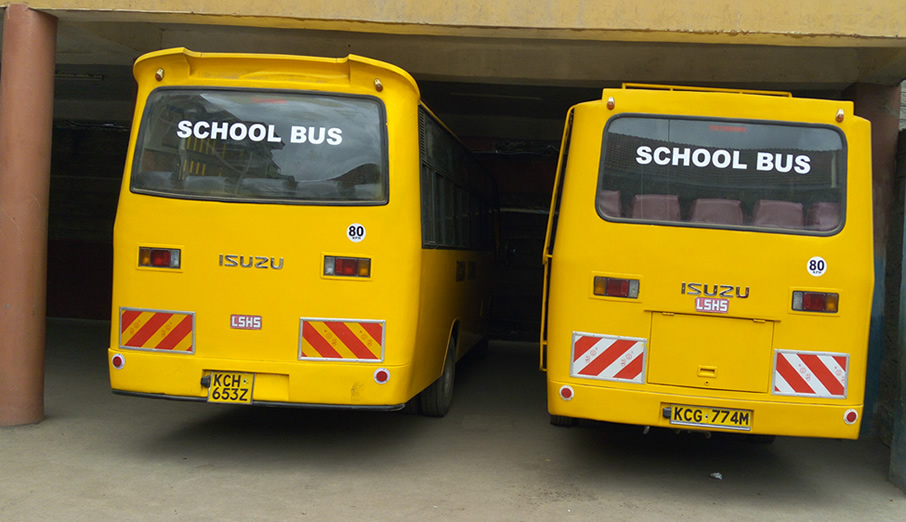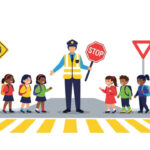In Kenya, school buses are critical for ensuring the safe transportation of students to and from educational institutions. With the rising demand for reliable and secure school transport, the Kenyan government, through the National Transport and Safety Authority (NTSA) and the Kenya Bureau of Standards (KEBS), has established stringent regulations to safeguard young passengers. This comprehensive guide outlines the legal and safety requirements for operating a school bus in Kenya, ensuring compliance with the latest standards as of 2025. Whether you’re a school administrator, transport provider, or parent, understanding these regulations is essential for prioritizing student safety.
Why School Bus Regulations Matter in Kenya
School buses in Kenya carry millions of students daily, navigating busy urban roads and rural routes alike. Incidents of reckless driving, overloading, and poorly maintained vehicles have, in the past, led to tragic accidents, prompting the government to enforce strict guidelines. These regulations aim to:
- Enhance the safety of students during transit.
- Standardize school bus operations across the country.
- Ensure accountability for drivers and transport providers.
- Promote public confidence in school transport systems.
This article details the specific requirements for school buses, from vehicle design to safety features, as outlined in Kenyan law, while incorporating practical insights for compliance.
Key Legal Requirements for School Buses in Kenya
The NTSA, in collaboration with KEBS, has outlined specific standards for school buses under the Traffic Act and related regulations. These rules cover vehicle specifications, safety equipment, and operational protocols to ensure student safety.
1. Insurance and Inspection Requirements
Every school bus must meet basic operational standards to be roadworthy:
- Minimum Third-Party Insurance Cover: All school buses must have valid third-party insurance to cover potential liabilities in case of accidents.
- Annual Vehicle Inspection: School buses must undergo an annual inspection by NTSA-approved centers to verify compliance with safety and mechanical standards.
These requirements ensure that buses are financially and mechanically equipped to operate safely.
2. School Bus Attendant and Stop Sign for Elementary Students
For buses transporting elementary students, additional safety measures are mandatory:
- School Vehicle Attendant: A trained attendant must be present to supervise young passengers, assist with boarding and alighting, and manage emergencies.
- STOP Sign: The bus must be equipped with a STOP sign, used by the attendant to signal other vehicles when students are boarding or alighting.
These measures reduce the risk of accidents during pick-up and drop-off times, particularly for younger children.
3. Safety Belts and Child-Friendly Design
Safety belts are a critical component of school bus safety:
- Functional Safety Belts: All seats must be fitted with safety belts designed specifically for children, adhering to KEBS-approved standards.
- Child-Centric Design: The belts must be adjustable and comfortable to encourage consistent use by students.
This ensures that children are securely restrained during transit, minimizing injury risks in case of sudden stops or collisions.
4. Vehicle Color and Markings
To enhance visibility and identification, school buses must adhere to specific aesthetic standards:
- Yellow Color Code (Pantone 012C): All school buses must be painted in a bright yellow shade (Pantone 012C) to make them easily recognizable on the road.
- Mandatory Markings:
- The words “SCHOOL BUS” must be prominently displayed in block letters on the front and rear.
- The phrase “DO NOT PASS WHEN RED LIGHTS ARE FLASHING” must appear at the rear in black block letters, at least 8 inches tall.
- A complaints phone number must be displayed, prefixed with “IN CASE VEHICLE BEING DRIVEN RECKLESSLY CALL”, to encourage public reporting of unsafe driving.
These markings ensure that other road users can identify school buses and act cautiously around them.
5. Fire Safety Equipment
Fire safety is a non-negotiable requirement:
- Fire Extinguisher: Each school bus must carry at least one fire extinguisher that:
- Conforms to KEBS standards.
- Is readily accessible and in good working order.
- Is not expired and is regularly maintained.
This ensures that drivers or attendants can respond promptly to fire-related emergencies.
6. Bus Chassis and Structural Requirements
School buses must be built to withstand the demands of frequent use:
- Bus Chassis Only: The vehicle must be constructed on a dedicated bus chassis, ensuring durability and stability.
- Seating Standards:
- Seats must be fixed (non-foldable) to prevent movement during transit.
- Upholstery must be soft, shock-absorbent, and fire-resistant.
- If equipped with seat handles, they must be covered with materials that prevent injury during collisions.
These structural requirements enhance passenger safety and comfort.
7. Lighting and Signal Systems
Visibility and signaling are crucial for safe school bus operations:
- Dual Red-Light Indicators:
- Must be installed on the uppermost part of the front and rear of the bus.
- Positioned as per the Third Schedule, spaced at least 600mm apart.
- Emit flashing yellow or amber lights, alternating at 90–180 flashes per minute.
- Controlled by an isolating switch for driver operation.
- Stop Signal Arms (for buses over 30 feet):
- Reflectorized red stop signal arms must be installed on the front and rear right-hand sides.
- Must include mounting brackets, clips, or bolts for mechanical or electrical operation.
- Each arm must have at least two red lamps (top and bottom), flashing in sync with the dual red-light indicators.
- When extended, the arm must be perpendicular to the bus (within ±5 degrees) and positioned near the driver’s window frame, with the vertical centerline at least 9 inches from the bus’s side.
These systems alert other drivers to stop when students are boarding or alighting, reducing collision risks.
8. Mirrors and Visibility
Drivers must have a clear view of their surroundings:
- Mirrors: The bus must be fitted with mirrors providing adequate visibility of the sides, rear, and along both sides of the vehicle.
This ensures that drivers can monitor traffic and pedestrians effectively.
9. Telematic Systems and Cameras
Modern technology is integral to school bus safety:
- Vehicular Telematic System: Every school bus must be equipped with a telematic system, including a passenger-facing camera, approved by KEBS.
- Purpose: The system monitors driver behavior, tracks the vehicle’s location, and ensures accountability during transit.
This technology enhances oversight and provides evidence in case of incidents.
10. Window Regulations
To ensure unobstructed emergency exits:
- No Bars or Obstructions: Windows must be free from bars or any other obstructions, whether inside or outside, to facilitate evacuation in emergencies.
This requirement prioritizes student safety during crises.
11. Compliance with Additional Standards
School buses must adhere to all standards outlined in the Second and Third Schedules of the relevant regulations, covering additional technical specifications for vehicle construction and safety features.
Practical Steps for School Bus Operators in Kenya
Complying with these regulations requires careful planning and investment. Here are actionable steps for schools and transport providers:
- Partner with Reputable Suppliers: Source buses from manufacturers that meet KEBS and NTSA standards, ensuring compliance with chassis, color, and safety equipment requirements.
- Conduct Regular Maintenance: Schedule annual inspections and routine maintenance to keep fire extinguishers, safety belts, and lighting systems in top condition.
- Train Drivers and Attendants: Ensure drivers are licensed for passenger vehicles (PSV) and attendants are trained in child safety protocols.
- Install Telematic Systems: Work with certified providers to install KEBS-approved telematic systems and cameras.
- Engage Parents and Communities: Display the complaints phone number prominently and encourage feedback to maintain accountability.
- Budget for Compliance: Factor in costs for insurance, inspections, and safety upgrades to avoid penalties or operational bans.
Challenges in Meeting School Bus Requirements
While these regulations are designed to enhance safety, operators face several challenges:
- High Compliance Costs: Retrofitting buses with telematic systems, safety belts, and stop signal arms can be expensive, particularly for smaller schools or rural operators.
- Maintenance Demands: Regular inspections and upkeep of safety equipment require consistent funding and expertise.
- Driver Training Gaps: Ensuring drivers and attendants are adequately trained can be challenging, especially in areas with limited access to training programs.
- Enforcement Variability: In some regions, enforcement of NTSA regulations may be inconsistent, leading to non-compliance by some operators.
To address these, schools can explore partnerships with government programs or private organizations offering subsidies or training for school transport safety.
The Role of Parents and Communities
Parents play a vital role in ensuring school bus safety:
- Verify Compliance: Check that the school bus meets NTSA and KEBS standards, including visible markings, safety belts, and telematic systems.
- Report Issues: Use the complaints phone number to report reckless driving or non-compliance.
- Educate Children: Teach students to use safety belts and follow the attendant’s instructions during transit.
Community advocacy can also pressure schools and operators to prioritize safety, fostering a culture of accountability.
The Future of School Bus Safety in Kenya
As Kenya continues to urbanize and student populations grow, the demand for safe school transport will increase. Emerging trends include:
- Adoption of Electric School Buses: With global shifts toward sustainability, Kenya may explore electric buses, which require additional regulatory frameworks.
- Enhanced Telematics: Advanced systems with real-time tracking and AI-based monitoring could become standard.
- Stricter Enforcement: NTSA may leverage technology, such as automated license plate recognition, to enforce compliance more effectively.
Staying ahead of these trends will ensure that school transport remains safe and efficient.
Operating a school bus in Kenya demands strict adherence to NTSA and KEBS regulations, from third-party insurance to child-specific safety features like belts and stop signal arms. By prioritizing compliance, schools and transport providers can protect students, avoid penalties, and build trust with parents and communities. While challenges like costs and enforcement persist, proactive measures—such as regular maintenance, driver training, and community engagement—can bridge the gap. As Kenya’s education and transport sectors evolve, staying informed about school bus requirements is crucial for ensuring the safety of the nation’s future leaders.
For more information on compliance or to report issues, contact the NTSA or visit their official website. Stay vigilant, prioritize safety, and keep Kenya’s students secure on their journey to knowledge.





